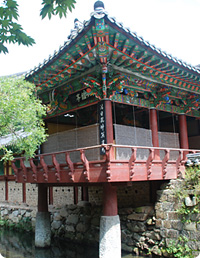PACKAGE
Jejudo 7 days
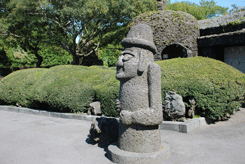
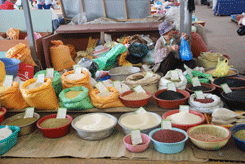
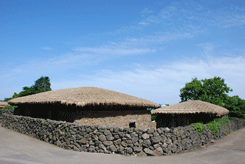
Tour Highlights
- Gyeongbokgung Palace
- National Folk Museum of Korea
- Insadong
- Namdaemun Market
- Yongduam
- Jeju Folklore and Nature History Museum
- Samseonghyeol Shrine
- Hallim Park
- Sanbangsan Tholoid
- Jisatgae Columnar Joint
- Oedolgae Rock
- Cheonjiyeon Waterfall
- Sangumburi Crater
- Seongeup Folk Village
- Seongsan Ilchulbong Tuff Cone
- Haenyeo Museum
- Manjang Cave
- Hallasan Hiking
Click on the days to access the program quick
| Days | Visits and Activities | Distance |
| Day 1 | Arrive Seoul | 60km |
| Day 2 | Seoul | |
| Day 3 | Seoul - Jeju | 480km |
| Day 4 | Jeju | 130km |
| Day 5 | Jeju | 110km |
| Day 6 | Jeju - Eorimok - Yeongsil - Seoul | 520km |
| Day 7 | Departure | 60km |
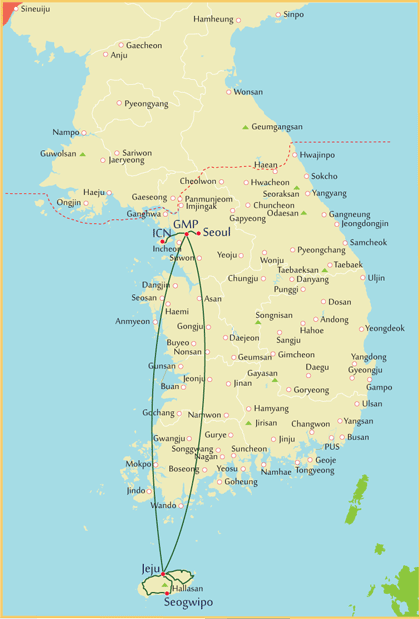 Day 1 Arrive Seoul (- - -)
Day 1 Arrive Seoul (- - -)
60km
Touching down at Incheon International Airport places you in the heart of Korea. After you clear Passport and Customs control, you will be welcomed by the tour guide and then transferred to your hotel.
Day 2 Seoul (B)
Your exploration this morning begins with a driving tour of Seoul, featuring sites such as Seoul Plaza, City Hall, Cheonggye Square and pedestrian-friendly Gwanghwamun Plaza that is hemmed in on both sides by rushing traffic and office buildings. The plaza is lined on each side with 365m long streamlets, two centimeters deep and one meter across, the stone bed of the plaza's east side waterway engraved with important events in chronological order from 1392 to 2008.
Standing high on a stone pillar is a statue of Yi Sunsin who had engaged in twenty-three naval battles and emerged victorious in all of them during the Hideyoshi invasion (1592-1598). King Sejong who propagated the Korean alphabet in the 15th century is also honored with prominent statue. On August 16, 2014, Pope Francis celebrated Mass in this plaza to beatify 124 Korean martyrs. Near the southwest corner of the plaza is Korea's Kilometer Zero, marking the distances to 64 cities around the world, including Seoul's antipode, Montevideo, Uruguay, 19,606km.
Step back in time to when life was gracefully slow and discover Gyeongbokgung Palace, a particularly charming spot that represents a colorful and turbulent side of the capital's 500-year history. Depending on timing, you may witness the Royal Guard Changing Ceremony featuring parade, password verification, duty shift and patrolling the gate. Accompanied by a court band with its colorful costumes and royal flags, the ceremony is performed daily basis at 10:00 and 14:00 except Tuesdays, although it is cancelled in case of rain or extremely hot or cold weather.
Up from the gates is a spacious stone-paved courtyard that is fully enclosed by wooden cloisters, and at the center of which runs three footpaths through two rows of rank stones, indicating the positions of the officials with the highest rank being closer to the hall.
Standing majestically on top of a two-tiered stone platform that is lined with detailed balustrades is Geunjeongjeon Hall, where the king formally granted audiences to his officials, gave declarations of national importance, presided over large official functions, and greeted foreign envoys and ambassadors. Check out the royal throne and a large painting, depicting sun, moon, five peaks, streams and pine trees, which was the crucial signifier of the king. And up in the center of the ceiling, the bright golden dragons in bold relief indicate the presence of the king.
At the back of the throne hall is a group of court offices. Displayed in front of the King's official quarters is sundial, conceived in order to catch the shadow of the sun, which tells time and 24 periods of seasonal change from the winter solstice to the summer solstice.
Sitting on the island in the rectangular lake is Gyeonghoeru. Supported by 48 square and cylindrical massive stone pillars representing the idea of Yin and Yang, this magnificent pavilion was used for many purposes ranging from receptions to national examinations.
Gangnyeongjeon is the king's sleeping and living quarters while Gyotaejeon is the queen's domain containing a number of halls. The noted feature of these main buildings is an absence of a top roof ridge.
Amisan Garden, landscaped with four hexagonal chimneys in orange bricks, is seldom noticed by the hurried visitors. Jagyeongjeon is the queen dowager's residence. Although less colorful, it is worth noting the wall, adorned with floral designs and the chimneys with ten longevity symbols.
Hyangwonjeong features a small pond with a manmade islet that supports a beautiful two-story pavilion. Behind this serene garden is Geoncheonggung, where the king and queen could relax in peace and quiet. It was here that the first electric lights in the country were installed in 1887 after 8 years of Thomas Edison's invention and a tragic chapter in Korea's history was recorded when empress Myeongseong was assassinated by the sword-bearing Japanese assassins in the early morning of 8 October 1895, allegedly under orders from Miura Goro.
Your visit to the National Folk Museum of Korea will familiarize you with wealthy culture of this friendly and picturesque nation. It is an excellent facility to illustrate the history of traditional life of the Korean people from the prehistoric age to the Joseon dynasty. The permanent exhibition features life and work, costumes and ornaments, handicrafts and technology, educations, living quarters, dietary life, oriental medicine, performing arts and games, beliefs and rituals, and
socio cultural life..
Insadong, at one time the center of traditional Korean art and antiques, features a mixture of historical and modern atmosphere representing the cultural glimpse of the nation. Clustered along the main street and alleys are lined with street vendors, wooden tea houses, restaurants and numerous galleries and shops dealing in antiques, oriental art supplies, and modern Korean art of all types and styles. Soak in the paintings, upscale artworks, antiques and potteries while you can. Get lucky and you just might meet the artist themselves. It can be plenty of fun walking on the main street, but you venture into the hidden alleys that do spring some unexpected surprises. While here, you may want to buy some souvenirs or simply wander and browse at leisure admiring cultural ambience.
Drive past Cheonggyecheon Stream. After the Korean War (1950-1953), more people migrated into Seoul to make their living and settled down along the stream in shabby makeshift houses. The accompanying trash and waste, and deteriorating conditions resulted in an eyesore for the city. The stream was covered with layers of concrete in the mid 1950s and roadway until the massive urban renewal project freed it in 2005. Today, a 5.8km creek tumbles gently through downtown Seoul, providing a much needed source of peace and relaxation for the citizens of this fast-paced city. You may have a chance to view the sculpture standing tall at the head of the stream on a small plaza. Created by Dutch artist Coosje Van Bruggen and Swedish artist Claes Oldenburg, a shell rising upward like pagoda symbolizes new life.
You will tour the centuries-old Namdaemun Market brimming with well over 11,000 shops selling anything you can imagine. One of the most colorful aspects of the market is an endless sprawl of street-vendor stalls that setup in the alleys and walkways between the buildings. The market is seriously crowded, so be prepared to get bumped around. A fantastic place to haggle over the price to get the best deal on something you want or simply admire the vibrancy of this massive market.
At the western entrance of the market in the middle of a traffic circle stands Sungnyemun. It is a formidable and iconic construct that served as the southern gate of the wall that surrounded Seoul during the period of the Joseon Dynasty.
Day 3 Seoul - Jeju (B) 480km
An hour flight places you in the most famous of the 3,300 islands of Korea. Towering over the island is Korea's highest peak, Mt. Halla, an extinct volcano topped by a huge crater. Jejudo was once a place of exile for those who fell out of favor with the Korean court, but it has today become the most popular tourist destination.
Yongduam, known as Dragon Head Rock, is one of the most unusual rock formations of the island. Its head with open mouth rising about 10m above the sea and silhouetted perfectly against the ocean horizon. The sight of the waves ricocheting back and forth across the rock base and the dragon’s head clearly outlined by the setting sun has become the subject of many travelers’ photos.
Drive past Gwandeokjeong, the oldest building in Jeju which was previously the site of government offices in the period of the Joseon dynasty (1392-1910). On its front stand two Dolharubang figures serving as fertility and protective totems only found on Jeju. Both statues have protruding eyes, bulbous nose, tightly closed lips and a phallic symbol head under the brimmed hat. Both arms are bent at the elbow, hands resting above and below a rotund stomach. Many couples and visitors as well come here, each standing to either side, to have their pictures taken with their hands on its nose. A group of buildings in the neighborhood is a restored Mokgwana, which has been the hub of local administration.
Jeju Folklore and Natural History Museum is an excellent facility providing a fascinating insight into the tenacious and independent lifestyle of Jeju islanders, the natural history of geological features and marine organisms, including plants, animals and minerals native to Jeju Island. Outdoor exhibition is highlighted by millstones, grave guards, tombstones and various stone tools used for daily living.
A short walk from the museum is Samseonghyeol literally three clan hole, a very symbolic spot to the islanders. According to legend, it was here that three demigods emerged from the holes in the ground to become the founding fathers of Tamna and its people. The descendants continue to uphold the traditions and still perform ritual ceremony twice a year on the 10th of April and October. Even more amazing aspect is that moisture from rain and snow do not penetrate the holes and the surrounding old trees face them at an angle as if they are worshiping three founders.
Day 4 Jeju (B) 130km
Spend a full day exploring western half of the island, including many of the top attractions of Jeju. Hallim Park is a subtropical botanical garden that is strongly scented with exotic sentiment. Every turn brings new surprises. You cannot miss out two unusual caves, one has both stalactites and stalagmites in it while the other is the only spot in the world that is actually a cave within a cave.
Sanbangsan is up next and you will see a magnificent trachyte cone abruptly rising 395 meters by the sea that lacks crater on its summit. Access to the grotto is steep stairs up for 10 minutes. There is a tiny cubbyhole of the 10 meter cave with a small pool and a stone Buddha surrounded by burning candles. The grotto's aura is enchanting with the welcoming scent of incense hanging heavily and the sound of water steadily dripping into the pool. The views from the grotto over the coastal fields, offshore islands, and the ocean are absolutely stunning.
Tide and weather permitting, explore Yongmeori Coast, a tuff ring outcropping into the sea showing the sedimentary structure of volcanic ash.
The way to the coast is down a steep path with huge rocks. The rippled cliffs, appeared to undulate towards and away from you, and the fancy rock formations are well worth your time to visit.The Dutch trade ship The Sperwer was wrecked nearby coastal waters on August 16, 1653 and of the 64 crewmembers only 36 survived. A duplicate of the ship with its rare exhibits is on display on the dry land, that provides insight into an exciting moment in history.
Jisatgae columnar joint forms an extraordinary and striking cliff face. A spectacular 1km stretch of coastline with hexagonal rock columns, bizarre formations resulted from rapid cooling and contraction of lava, is definitely one of the more mysterious and beautiful spots on the island. The surging ocean smashing against the rocks are remarkably refreshing.
Oedolgae needle rock holding a sad legend of old fisherman stands alone off the cliffy coast. Rising over 20 meters, it creates an awesome coastal views with its perfect backdrop of ocean and outlying islands. A great place to soak in the area's barely-touched nature amid fresh ocean breeze.
Tour also includes Cheonjiyeon waterfall cascading down a cliff 22m high and 12m wide into a pool inhabited by giant eels and surrounded by lush vegetation. The tour involves a short walk through a subtropical woods, the home to more than 400 individual species of plants and animals. In fact, the diversified biosphere is one of the most unique on the island, making your walk so relaxing and enjoyable - a peaceful way to spend some time with nature.
Day 5 Jeju (B) 110km
With another day of further exploration of the fascinating culture and natural wonders of Jeju. The day begins with a tour of Sangumburi, the only Maar in Korea. The access to the main viewing area is very easy. This spectacular crater is well over 2km in circumference, about 650m in diameter and 100m deep in that it could be easily mistaken for a circular stadium. The views in every direction with sprawling eulalia fields, stunning panoramas of the ocean, and volcanic cones dotting the island's landscape are absolutely breathtaking.
Experience the heritage of the Jeju people and soak up the local culture in Seongeup folk village where nearly 400 traditional thatched houses are still fully functioning. Scattered among the village are many houses that you can enter yourself and look around. Jeongnang gates are some of good examples that represent a beautiful tradition and culture of this friendly people with No Thief, No Beggar, and No Gate. While not overly exciting, the tour gives you a chance to get a glimpse into some of Jeju's unique culture.
You are treated to the UNESCO World Natural Heritage site of Seongsan Ilchulbong. Known as Sunrise Peak, it is the island's largest tuff cone which is surrounded on three sides by the ocean rising 182 meters strait from the water. You may wish to climb this steep cone up to the spectacular crater. A great for photos every step of the way!
Next up is Haenyeo Museum showcases the women diver's harsh work and life as well as their strong tenacity. The display includes the tools, diving outfits, as well as diving techniques and a full-size replica of a traditional women diver house including a primitive log raft that once used for fishing.
You will tour another UNESCO World Natural Heritage site, Manjang Cave. It is the world's longest lava tube which has a known length of 13.4km. On entering the cave, you are likely to be greeted by a cold breeze oozing out of the lava tubes, and the cave's ceiling tends to drip at times. Although the floor is full of puddles and the lighting inside is dim, you can easily cover up to 1km by walk, exploring the weirdly shaped stalactites, stalagmites, flow ledges and finally lava stone pillar. One of the major attractions inside the cave is the Stone Turtle, which many believe is shaped like Jejudo.
Day 6 Jeju - Eorimok - Yeongsil - Seoul (B) 520km
Today's hiking is designed for active adults for all levels of fitness. This 11-km hiking trail from Eorimok (970m) to Yeongsil visitos center (1,000m) is one of the greatest hikes on the island. The view from the trail on a clear day, includes Mt. Hallasan, small villages dotting the island, and numerous Oreums scattered around. Spring can be a particularly beautiful time of year for this walk as the park is covered in beautiful wild flowers adding a splash of colour to the green mountains, and in autumn you can feel the change of season. Today, you will enjoy an easy overall 5 hours walk. While there are several options to take from, you will follow the Sajebi Hill (1,423m), Manse Hill (1,606m) and finally Witsae Oreum Shelter (1,700m), covering a total of 4.7km in about 2 hours and 30 minutes, from where you take a Yeongsil trail of 6.1Km, passing by Byeongpung Bawi and Yeongsil shelter (1,280m). The first leg of hiking can be strenuous and Byeongpung Bawi (folding screen rocks) area on descend is rather steep. Stay on the trail with a group as always since the trail in part can cause rockslides and a risk of getting lost. Also be prepared for the risk of hypothermia as the weather in the Hallsan is unpredictable and there is a high risk of fog and lightning.
Hiking time: 5 hours
Altitude to be hiked up: 1,700m
Altitude to be hiked down: 1,000m.
In case of bad weather on the mountains, the tour will be substituted with one of the Olle trails walking tour.
After the tour, return this afternoon on a flight to Seoul.
Day 7 Departure (B) 60km
After this wonderful trip exploring Korea and with time to reflect on your surprise in your experience, you will return to Incheon International airport in time for your flight. By boarding, you are already high above Incheon heading for home.





